|
|
 |  |
 |
|
|
|
|
Location
Korea lies adjacent to China and Japan. The northern border of Korea is formed by the Amnokgang and Dumangang rivers which separate it from Manchuria. A 16-kilometer segment of the Dumangang river to the east also serves as a natural border with Russia. The west coast of the Korean Peninsula is bounded by the Korean Bay to the north and the Yellow Sea to the south; the east coast is bounded by the East Sea. Two hundred kilometers separate the peninsula from eastern China. The Japanese islands of Honshu and Kyushu are located 206 kilometers to the southeast, just across the Korea Strait. |
 |
| Map |
|
Capital
Seoul is the capital city of South Korea, having over 10 million residents. Clustered around Seoul are numbers of smaller cities which form a continuous and sprawling urban area.
Size
The total area of the peninsula, including the islands, is 222,154 square kilometers of which about 45 percent, excluding the area in the Demilitarized Zone, constitutes the territory of South Korea.
Geography
The Korean Peninsula is divided into three distinct regions; Central, South and North. The Central region is the capital region of the Seoul metropolitan area, Chungcheong-do and Gangwon-do provinces; in the South, Gyeongsang-do, Jeolla-do and Jeju-do provinces; and in the North, Pyeongan-do and Hamgyeong-do and Hwanghae-do provinces.
Climate
The climate of Korea is characterized by four distinct seasons: spring, summer, autumn and winter. The contrast between winter and summer is striking. Temperatures of all seasons are somewhat lower than those at the corresponding latitudes in other continents, such as North America or Western Europe. The prevailing winds are the southeasterly in summer, and the northwesterly in winter. The winds are stronger in winter, from December to February, than those of any other season. The relative humidity is the highest in July with 80% to 90% nationwide, and is the lowest in January and April with 30% to 50%. Precipitation distribution on the Korean Peninsula is mainly affected by orography.
Population
The Koreans are one ethnic family and speak one language. As of the end of 2001, Korea's total population was estimated at 47,676,000 with a density of 479 people per square kilometer.
National symbols
| Flag and its meaning |
 |
The Korean national flag is called Taegukki. The white field represents the people's purity and their desire for peace, while the central emblem is the red and blue yin-yang symbol, depicting the concepts of creation and development through duality and balance. Surrounding this are four black KWAE symbols, which are taken from the YEOK KYUNG and represents the four seasons, the four compass points, the four elements, and the sun, moon, earth and heaven. They devote the process of yin and yang going through a spiral of change and growth. |
| Anthem |
The national anthem is "Aegukga", which means a "Love the Country".The Republic of Korea Government in 1948 officially adopted the final version as the national anthem and began to use it at all schools and official functions. |
| Flower |
 |
The Korean national flower is the rose of Sharon, or "Mugunghwa". According to records, Korean people have treasured the rose of Sharon as a heavenly flower since ancient times. As the rose of Sharon has been an important part of the Korean culture for centuries, it was only natural that the government adopted it as the national flower after Korea was liberated from Japanese colonial rule. |
| Government Seal |
The national great seal is used on important national documents. Consequently, the stamping of the Guksae, the national seal, is the final step of a national undertaking. It thus makes history, so to speak. The national great seal symbolizes national authority, power, and culture. |
National day
October 3 is the Korean National Foundation Day. This day marks the founding of the first nation of Korea by Dangun in 2333 B.C.
History
| Prehistoric Korea |
Early man first inhabited the Korean peninsula roughly half a million years ago |
| Gojoseon |
The people of Gojoseon or the oldest kingdom of Korea are recorded as Dongi, "eastern bowmen" or "eastern barbarians." They propagated in Manchuria, the eastern littoral of China, areas north of the Yangtze River, and the Korean Peninsula. |
The
Three Kingdoms |
Baekje, Silla, Goguryeo developed highly sophisticated state organizations on the Korean Peninsula, adopting Confucian and Buddhist hierarchical structures with the king at the pinnacle. The Three Kingdoms were competing with each other in efforts toward serious territorial expansion. |
| The Balhae Kingdom |
Subsequent to the fall of Goguryeo, Dae Joyeong, a former Goguryeo general, formed an army and led a migration to Chinese-controlled territory. The ruling class of Balhae consisted mostly of Goguryeo(i.e. Korean) people. |
| Unified Silla |
Silla(57B.C.-A.D.935), reached peak of power and prosperity in the middle of the eighth century. It attempted to establish an ideal Buddhist country and constructed the Seokguram Grotto Shrine and Bulguksa Temple with splendorous masonic art. |
| Goryeo & Joseon Dynasties |
| Goryeo Dynasty |
Silla was torn to pieces by rebel leaders such as Gyeon Hwon who proclaimed the Latter Baekje state in Jeonju in 900, and Gung Ye who proclaimed the Latter Goguryeo state, the following year at Gaeseong. Wang Geon, the last rebel leader, the son of a gentry family, became the first minister of Gung Ye. Overthrowing Gung Ye for misdemeanors and malpractice in 918, he sought and received the support of landlords and merchants whose economic as well as political power overwhelmed the Silla government. |
| Early Joseon Period |
King Sejong's Confucian Humanism
Joseon's fourth king, King Sejong the Great(r. 1418-1450), was noted for his mastery of Confucian learning. In addition to his embrace of Confucian values, he showed himself able to successfully deal with the yangban scholars. His rule in the mid-15th century was marked by progressive ideas in administration, phonetics, national script, economics, science, music, medical science, and humanistic studies. He established the Jibhyeonjeon(Hall of Worthies)in order to promote research in institutional traditions and politico-economics.
One of his most celebrated achievements was the creation of Korean alphabet, Hangeul. |
| Late Joseon Period |
a. Postwar readjustment
b. Tax reforms
c. Rise of a reformist school
d. King Yeongjo's reforms
e. Pragmatic studies
f. Emergence of modern culture
g. Welfare programs |
| challenges of Modernization |
a. Response to capital encroachment
b. Opposition to Japan's discriminatory treatment
c. Awakening of the people |
| Colonial Period |
a. Resident-General and Resistance
b. Economic exploitation from Japan
c. Educational change
d. Further moves against Japanese rule
e. The Independence Army |
| Contemporary Period |
a. Establishment of the Republic of Korea
b. The Korean War(June 25, 1950)
c. Democratic Revolution |
Language
All Koreans speak and write the same language, which has been a decisive factor in forging their strong national identity. Koreans have developed several different dialects in addition to the standard used in Seoul. However, the dialects, except for that of Jeju-do province, are similar enough for native speakers to understand without any difficulties.
Linguistic and ethnological studies have classified the Korean language in the Altaic language family. The Korean alphabet Hangeul, was created by King Sejong the Great during the 15th century. Hangeul which consists of 10 vowels and 14 consonants, can be combined to form numerous syllabic groupings. It is simple, yet systematic and comprehensive, and is considered one of the most scientific writing systems in the world.
|
 |
|
|
Political system/Leaders
Semi-presidential republic
President: Roh Moo-hyun, Prime Minister: Han Duck-soo
Key political developments/figures
In 1960, a student uprising led to the resignation of President Syngman Rhee, whose government had become autocratic and corrupt. Since then followed a period of profound civil unrest and general political instability. General Park Chung-hee led a military coup (the "5.16 coup d'etat") against the weak and ineffectual government the following year. Park took over as president from 1961 until his assassination in 1979, overseeing rapid export-led economic growth as well as severe political repression.
In 1980, General Chun Doo-hwan launched a coup d'etat against the transitional government of Choi Gyu Hwa, the former prime minister under Park and interim president, to assume the presidency. Chun's seizure of power triggered national protest asking for democratization, particularly protest in Gwangju, South Cholla province. Chun stated his intent to serve only a single term from the outset and eventually allowed direct presidential elections in 1988 under pressure from widespread popular demonstrations.
In June 2000, as a part of South Korean president Kim Dae Jung's Sunshine Policy of engagement, a North-South summit took place in North Korea's capital Pyongyang. That year, Kim won the Nobel Peace Prize for his work for democracy and human rights and efforts at reconciliation between the two Koreas.
Key political parties/figures
There are currently five political parties represented in the National
| Uri Party |
It is a liberal party of President Roh Moo-hyun and a majority in the National Assembly after the 2004 election. |
| Grand National Party |
It is a conservative party and the largest opposition party in the National Assembly. It is the heir of South Korea's traditionally conservative political elite. The party supports capitalism, free trade, entrepreneurship, economic development, small government, tax reductions, and maintenance of strategic alliance with the U.S. and other Western nations. |
| Democratic Labour Party |
It is a democratic socialist party which gain support from farmers, industrial factory workers, and progressive intellectuals. |
| Democratic Party |
It took part in the last elections as the "Millennium Democratic Party." It was formerly the major liberal party and the second-largest party prior to the election. |
Most recent elections
Year |
Election |
2002 |
the 16th Presidential Election (December 19, 2002) |
2004 |
Parliamentary Election (April 15, 2004) |
2007 |
Presidential Election (scheduled for December 2007) |
|
 |
|
|
Economy system
Market economy
Major economic indicators
- Population : 48,294 thousand persons (2005 est.)
- Investment ratio : 30.3 % (2004 est.)
- Foreign exchange holding : 210,391 million dollars (2005 est.)
- Tax burden :
tax 171,926,600 million Korean won, ratio to GDP 19.6 (2006 est.)
GDP per capita/GDP real growth rate
$24,200 (2006 est.)/5.7% (2006 est.)
International reserve
244 billion USD(March 2007)
Consumer price inflation
2.4% (2006 est.)
Budget of general government
2,408,563 hundred billion Korean won(2006 est.)
Key natural resources
Coal, tungsten, graphite, molybdenum, lead, hydropower potential
|
 |
|
|
Key historical events
- The Korean War
On June 25, 1950, the North invaded the South at the instigation of Stalin, tacitly approved by Mao Zedong. Thus began a bloody war that caused the deaths of more than 4 million civilians and soldiers alike, now referred to as the Korean War. The UN intervened on behalf of South Korea when it became apparent that the superior Communist forces would easily take over the entire country. The Soviet Union and China backed North Korea, with China sending millions of troops across the border. The 1953 armistice eventually split the peninsula along the demilitarised zone at about the original demarcation line. No peace treaty was ever signed, however, and therefore the two countries are technically still at war.
- In 1988, Seoul hosted the Summer Olympics.
- Despite a severe setback caused by the Asian financial crisis in 1997, South Korea was able to re-emerge as a major economic power. In 2004, South Korea joined the "trillion dollar club" of world economy.
- In June 2000, a North-South summit took place in North Korea's capital Pyongyang. Since then, trade and investment between the two Koreas have increased dramatically as a result of regular contacts in relations and economic ties.
Culinary culture
Korea's culinary culture has been shaped by its natural environment. Also, seasonal changes produced different seasonal foods. Kimchi is the most representative type of Korea's preserved vegetable, while jeotgal is a well-preserved seafood sauce. Given the distinct climatic changes in Korea, the menu of the traditional Korea varies season to season.
- Kimchi
Kimchi is a uniquely pungent mixture of fermented vegetables and its variations amounted to roughly 80 kinds of dishes during the Joseon period. For spring, summer, and fall consumption, kimchi was prepared in a small quantity, but for the winter months, large quantities were made so that it could be eaten over three or four months. The kimchi-curing for the winter season was called gimjang and was usually done in late November.
|
 |
|
|
ACD
- Year of joining ACD
South Korea is one of the founding members of ACD.
- Roles in the ACD
After being designated as the prime mover for IT cooperation at the 2nd Ministerial Meeting in Chiang Mai, 2002, the Republic of Korea has developed and carried out diverse IT cooperative projects designed to bridge the digital divide among the ACD members. These projects were pursued with two institutions as their proponents: the Ministry of Information and Communication(MIC) and the Korean International Cooperation Agency(KOICA).
Other regional groupings
South Korea maintains diplomatic relations with approximately 170 countries. The country has also been a member of the United Nations since 1991, when it joined at the same time as North Korea. It has also developed links with ASEAN as both a member of "ASEAN Plus three" and the East Asia Summit(EAS).
Other international organization participation include:
AfDB, APEC, APT, ARF, AsDB, Australia Group, BIS, CP, EBRD, FAO, IADB, IAEA, IBRD, ICAO, ICC, ICCt, ICRM, IDA, IEA, IFAD, IFC, IFRCS, IHO, ILO, IMF, IMO, Interpol, IOC, IOM, IPU, ISO, ITU, ITUC, LAIA, MIGA, NEA, NSG, OAS(observer), OECD, ONUB, OPCW, OSCE(partner), PCA, PIF(partner), SAARC(observer), UN, UNCTAD, UNESCO, UNHCR, UNIDO, UNMIL, UNMIS, UNMOGIP, UNOMIG, UNWTO, UPU, WCL, WCO, WHO, WIPO, WMO, WTO, ZC |
 |
|
|
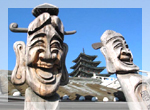 |
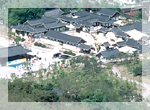 |
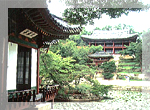 |
 |
| Traditional totem poles |
Namsangol Traditional Korean Village |
Buyongjeong(Lotus Pavilion), Changdeokgung Palace |
Stone Statue of Buddha at the Seokguram Grotto in Gyeongju |
| |
|
|
|
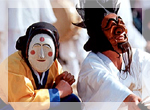 |
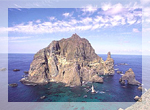 |
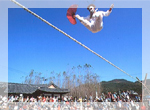 |
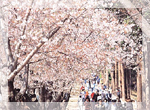 |
| Hahoe Mask Dance |
Dokdo located about 215 kilometers off the eastern border of Korea |
Tightrope Walking |
Cherry blossoms and sightseers |
|
Source
https://www.bluehouse.go.kr
https://www.korea.net
https://www.mpb.go.kr
https://en.wikipedia.org
https://www.cia.gov/cia/publications/factbook |
|
|
|






